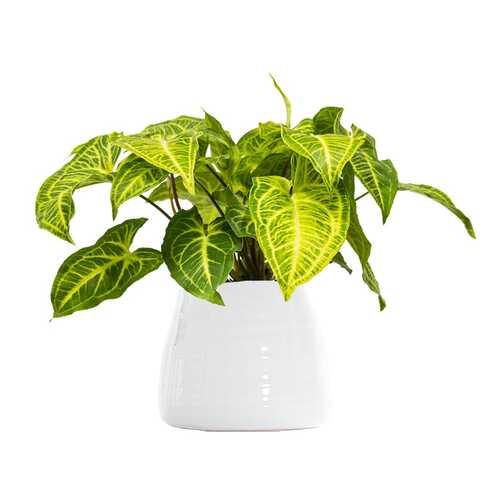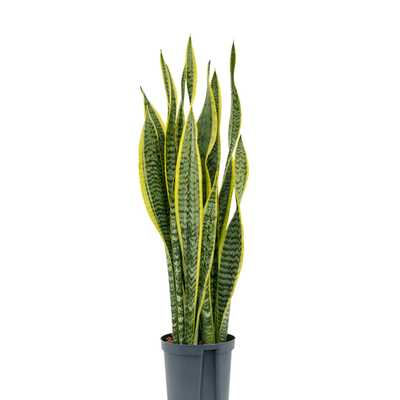Call US : 989124548005
Nolina
0 USD
Short Description:
Nolina is a lovely houseplant which is famous for its amazing trunk, which looks like an Elephant’s Foot. Also, since its leaves resemble a ponytail, it’s rightly named Ponytail palm as well. Bottle Palm is another term used for this plant. The easy-to-care plant is a nice option for care-free house owners.Nolina overall features
Nolina is a lovely houseplant which is famous for its amazing trunk, which looks like an Elephant’s Foot. Also, since its leaves resemble a ponytail, it’s rightly named Ponytail palm as well. Bottle Palm is another term used for this plant. The easy-to-care plant is a nice option for care-free house owners.
Categorized in the past as Nolina recurvata or Beaucarnea recurvata, Nolina is now classified as Beaucarnea recurvata.
The impressive evergreen plant has strappy, long leaves, which sound more like grass. The edges of the leaves are so sharp they might injure your hand if touched carelessly.
The beautiful curly leaves hang down like a fountain, giving any setting an elegant texture. Interestingly, native Americans use the leaves to make baskets.
The perennial plant has a fat, roundish trunk with leaves sprouting from it. The trunk holds water inside, making it easier for the plant to cope with drought and dry conditions.
In its original habitat, the plant might grow up to 30 feet in height; but houseplant containers don’t allow this growth. Therefore, the plant is generally quite shorter in its indoor setting.
The Elephant’s Foot Tree comes in a variety of shapes, sizes and colors. Some of the species grow lots of stunning, creamy flowers.
Origin
Nolina is native to Mexico, it also grows in Guatemala and the southern states of the United States. It belongs to the Asparagaceae family.
Lighting
A good place to keep the plant is in balconies and patios as it adores sunshine. Another nice place would be near a window. It can tolerate slightly shady places; however, don’t move it back to a sunny place all at once. It might take a few hours a day for the plant to adapt to its new environment.
The cascading plant loves bright light; however, extreme direct light should be avoided.
Watering
From spring to fall water regularly; and reduce it in cold times. Never allow it to soak in water, which is a big threat to its roots.
While so many plants can’t handle shortage of water, Nolina is pretty adaptable and can live without too much water.
Mature versions can easily tolerate very dry conditions due to their thick, swollen base, where water is stored.
For watering, wait till the soil dries out.
Humidity and temperature
Avoid keeping the plant in extremely dry places. Technically, in spaces with an excessively low level of humidity, tips and edges of the leaves start browning. However, humidity isn’t a factor to be concerned over so much.
The lovely plant can handle fairly cold situations; but not forever. It likes high temperature; nonetheless, the best growth happens at roughly 21°Celsius. In active times, the plant adores high temperatures and in dormant, cold times, a minimum of 10°C should be maintained.
At temperatures below 7 ° Celsius, the plant will be hurt. However, some of its species are frost tolerant.
The succulent plant grows best in semi-dry conditions.
Proper Soil
The loose soil should be partially moist in growing seasons. Apply pots that allow a good drainage. The plant flourishes in a cacti or succulent potting mix; peat makes it rich.
These plants don’t need much food; light feeding with all-purpose fertilizer would be sufficient. Do this once a month over spring and summer. Or Use liquid fertilizer in this period to nourish the plant with more nutrients. Apply it every week.
The soil’s pH should be from 6.5 to 7.5.
Brief overview:
Botanical Name: Nolina (Beaucarnea recurvata)
Family: Asparagaceae
Plant type: Perennial, evergreen
Plant’s classification: Ornamental houseplant
Requirements: bright indirect light; high temperature; acidic soil, pH 6.5 to 7.5, well-drained soil
| Height : | 50cm |
| Pot (Liter) : | 7 |
Product Reviews
Similar Products
List of similar products that you can see

Yucca’s
0 USD

Yocca
0 USD

Zamioculcas Zamiifolia
0 USD

Syngonium’s
0 USD

Spathiphyllum
0 USD

Schefflera
0 USD

sansevieria
0 USD

Pothos Silver Splash
0 USD

Pothos adanson
0 USD


.jpg)
.jpg)
.jpg)
